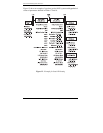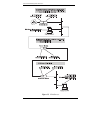
Network and Management Overview
66 Megabit Modem CRA-C User Manual
TFTP
Trivial File Transfer Protocol (TFTP) is used to download networking image
code to the Megabit Modem CRA-C from a TFTP server. This allows
software upgrades to be performed over the network. The Megabit Modem
CRA-C initiates a TFTP download of application code in these situations:
current application code is not valid; this occurs when the CRC
calculated on power-up doesn't match the expected CRC
user sets the value of Image Load Mode to NETWORK, save the
configuration to flash, and reboots the Megabit Modem CRA-C
In either case, the Megabit Modem CRA-C performs a BOOTP request first to
get the most current network configuration. If the BOOTP fails, the TFTP
session is attempted.
TFTP conforms to RFC 1350: The TFTP Protocol (Revision 2)
TFTP uses the connectionless User Datagram Protocol (UDP) for file transfer
with minimum overhead.
Encapsulation Protocols
You can select from two packet encapsulation formats for data transported
across the ADSL WAN link: Point-to-Point Protocol (PPP) or High-level
Data Link Control (HDLC), which is the default. HDLC is the preferred
when the system is terminated at each end with PairGain products that have
Ethernet ports. PPP is used when interfacing to a WAN port on non-PairGain
equipment. In PPP mode, the Megabit Modem CRA-C supports the
Bridge Control Protocol (BCP) RFC 1638 when configured as a bridge
and the Internet Protocol Control Protocol (IPCP) RFC 1332 when configured
as a router.


















